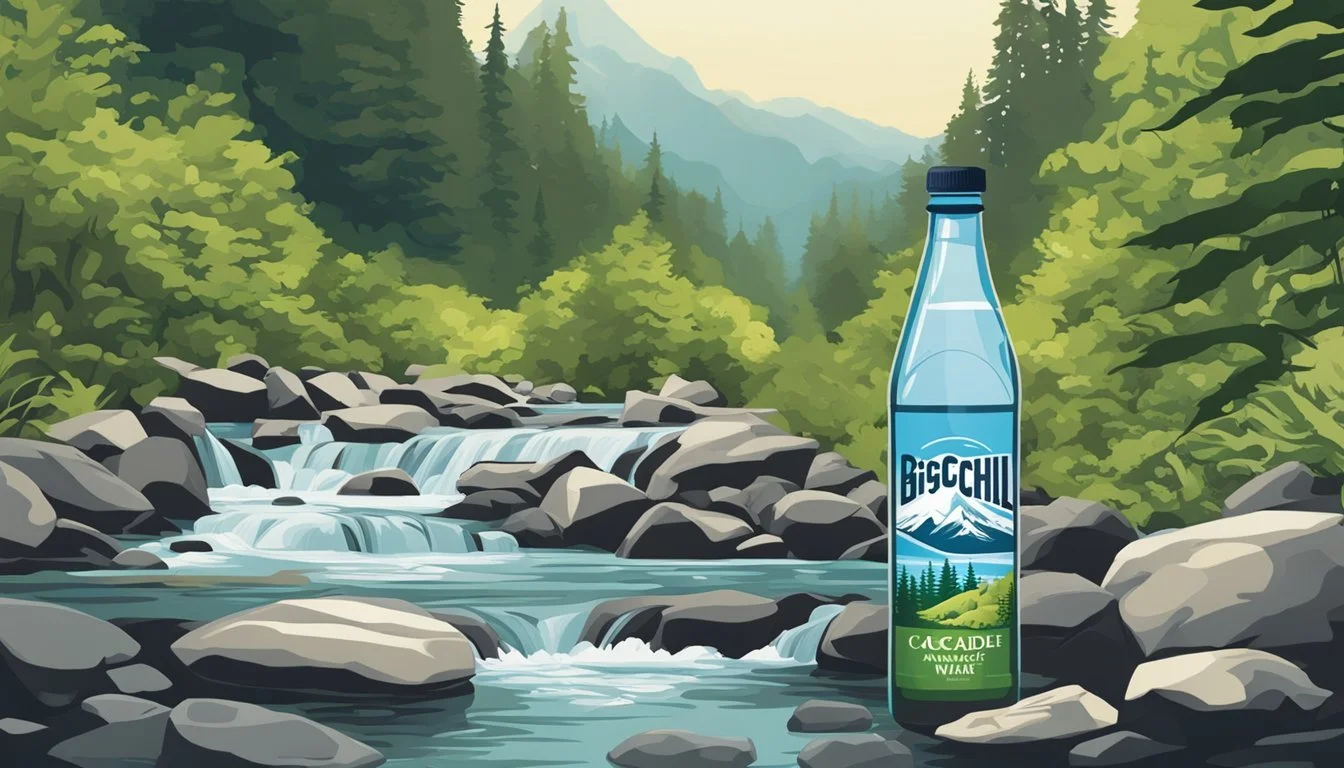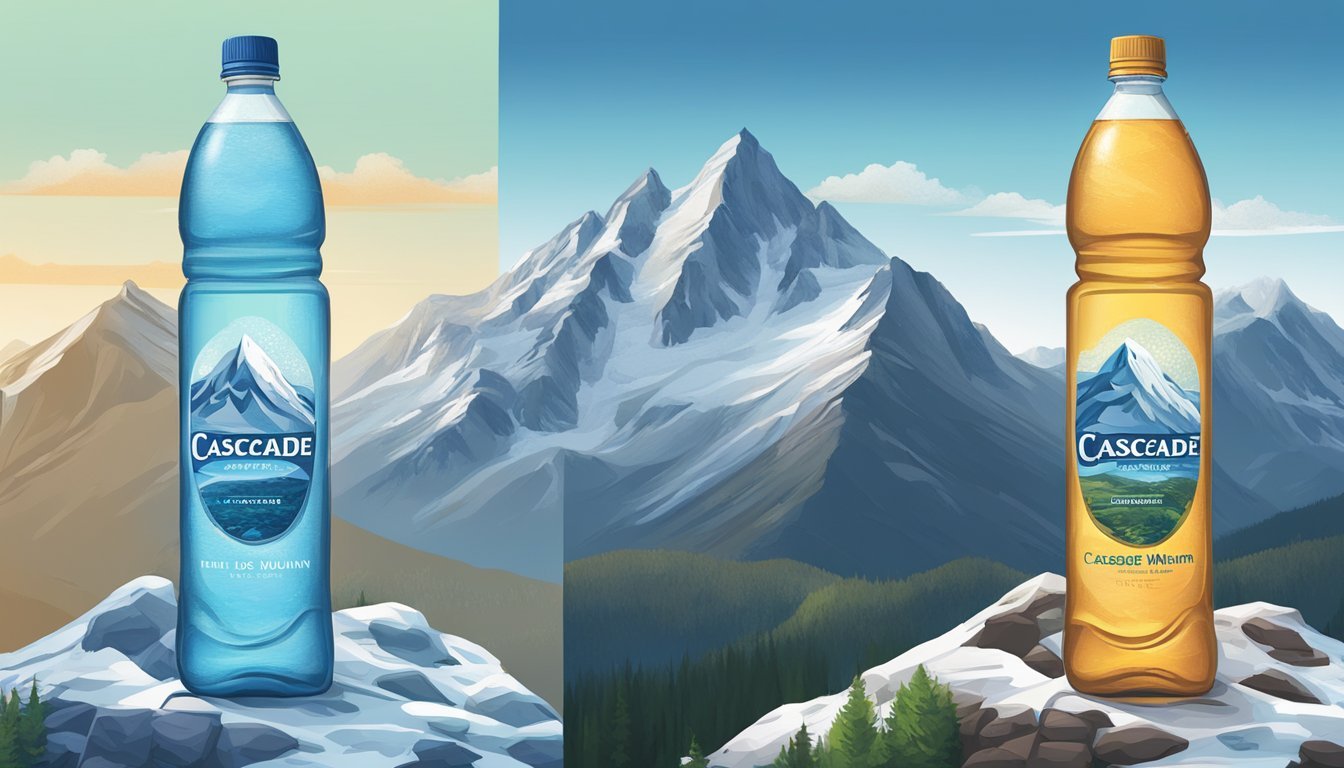Cascade Mountain vs. Big Chill
A Comparative Review of Bottled Water Quality
When it comes to choosing the best bottled water, the decision often boils down to taste and quality. Cascade Mountain and Big Chill are two brands that stand out in this competitive market. Both offer distinct characteristics that attract different kinds of consumers, but which one truly stands out?
Cascade Mountain boasts a crisp and clean taste, frequently praised for its purity and reliable filtration process. On the other hand, Big Chill is more neutral in flavor, catering to those who prefer a milder drinking experience. Each brand sources its water differently, which can significantly impact the final product's taste and overall quality.
With Cascade Mountain offering a slight tang that some find delightful and others off-putting, and Big Chill maintaining a balanced, neutral profile, the choice ultimately depends on personal preference. By delving into the specifics of each brand, readers can make an informed decision on which bottled water meets their quality and taste standards, providing better value for their hydration needs.
Bottled Water Landscape
Bottled water has seen significant changes over the years, shaped by consumer preferences and the rise of numerous brands vying for the top spot. This section dives into the evolution of bottled water, compares popular brands, and examines what factors matter most to consumers.
Evolution of Bottled Water
The bottled water industry began with natural spring water offerings, often marketed for their purity. As technology advanced, companies introduced purified and mineral-enhanced options.
Consumer demand for healthier lifestyles spurred growth, with brands emphasizing source purity, mineral balance, and environmental responsibility. Technological advances have enabled widespread production, making bottled water accessible globally.
Comparison of Water Brands
Mountain Valley Spring Water stands out for its balanced minerals and pure source. This spring water from Arkansas is praised for taste and mineral content.
Nestlé Pure Life, though a giant in the market, often receives criticism for taste and source issues. Reviews highlight an average profile, with concerns over additives.
Pure Life is also noted as having less reputable sources, affecting its ranking. Other brands, like Big Chill, may be positioned differently based on various attributes like source purity, taste, and mineral content.
Consumer Preferences
Consumers prioritize bottled water based on taste, purity, and brand reputation. Organic or minimally processed water often wins favor, reflecting a broader trend toward health-conscious choices.
Environmental impact also plays a role; consumers seek brands with sustainable practices, such as eco-friendly packaging and responsible sourcing. These factors significantly influence purchasing decisions.
Brand loyalty is strong, driven by consistent quality and brand transparency. In a competitive market, clear communication and maintaining high standards are key to winning consumer trust.
Understanding Water Sources
When choosing between Cascade Mountain and Big Chill, it's important to understand the varied sources and processes involved in bottling water. Different types of water come from different sources and undergo various treatments.
Spring Water and its Sources
Spring water comes from natural springs, where water flows naturally to the earth's surface. These springs often originate from underground water sources that accumulate rainwater.
Natural spring water is typically rich in minerals, offering a unique taste and potential health benefits.
The water is collected directly from the spring or through a borehole. Regulations ensure the water is of high quality and free from contaminants. Cascade Mountain sources its water from specific springs, aiming to preserve the natural characteristics and benefits of the spring water.
Purified Water and Filtration Processes
Purified water goes through significant treatment processes to remove impurities and contaminants. This type of water can originate from various sources, including municipal water.
Common purification methods include reverse osmosis, distillation, and deionization. Each method ensures the removal of particles, bacteria, and dissolved solids.
For example, Big Chill utilizes reverse osmosis to ensure the water meets stringent standards. The key advantage of purified water is its consistency in taste and composition due to the thorough filtration process.
Tap Water Versus Bottled Water
Tap water, also known as municipal water, is supplied through local water systems and subject to strict regulations.
Although safe for consumption, tap water may contain chlorine or fluoride used in the treatment process.
Bottled water, whether spring or purified, often boasts a cleaner taste and fewer additives. Cascade Mountain and Big Chill offer alternatives to tap water, each with unique sources and treatments, catering to different consumer preferences for purity and taste.
Assessing Water Quality and Health Benefits
This section examines the mineral content and health effects of Cascade Mountain and Big Chill bottled waters, alongside safety and quality reports of each brand.
Mineral Content Analysis
Cascade Mountain and Big Chill both offer unique mineral compositions.
Cascade Mountain, sourced from natural springs, boasts a balanced mineral profile with high levels of calcium and magnesium. These minerals can contribute to better bone health and muscle function. Big Chill, on the other hand, is known for its higher sodium content, which may be unsuitable for individuals monitoring their sodium intake.
Both brands ensure clarity and purity by undergoing multiple filtration processes, enhancing their overall mineral content.
Health Effects of Minerals and Electrolytes
The minerals present in each water brand have specific health implications.
Calcium and magnesium in Cascade Mountain support structural integrity of bones and aid in metabolic processes. Magnesium also helps with muscle and nerve function. Big Chill’s higher sodium content can offer electrolyte replenishment, essential for hydration and nerve transmission, particularly for athletes or those with higher physical demands.
However, excessive sodium intake can be a concern for people with hypertension or those following a low-sodium diet. Consumers should be mindful of these components based on their health requirements.
Safety and Quality Reports
Quality and safety are paramount when evaluating bottled waters.
Cascade Mountain adheres to stringent safety protocols, backed by regular quality reports. These reports confirm the absence of harmful contaminants such as PFAS and highlight the brand's compliance with EPA standards.
Big Chill also maintains rigorous testing procedures; however, it has faced scrutiny for its sodium content. Recent quality reports and third-party tests, including those from Consumer Reports, have affirmed its safety, though its chemical composition may still raise concerns for some health-conscious consumers.
Both brands aim to provide safe drinking water, yet their mineral compositions and safety profiles can influence consumer preference based on individual health needs.
Product Packaging and Environmental Concerns
Examining the packaging materials and associated environmental impacts of Cascade Mountain and Big Chill highlights the sustainability efforts of both brands.
Plastic and Alternatives
Cascade Mountain primarily uses reusable plastic bottles, designed for multiple uses. This reduces single-use plastic waste. Big Chill, however, offers a mix of packaging including plastic bottles and glass bottles. Plastic bottles are convenient but contribute to plastic waste.
Glass bottles, on the other hand, are fully recyclable and can be reused. Another alternative is boxed water, which is primarily made from paper, a renewable resource. Each packaging type has pros and cons in terms of environmental footprint and user convenience.
Addressing the Environmental Impact
Cascade Mountain leverages recyclable plastic in its production process, aiming to curb the impact of plastic waste. Nevertheless, recycling rates remain low, leading to significant environmental concerns. This low recycling rate is a significant challenge for all brands relying on plastic packaging.
Big Chill's use of glass bottles reduces the environmental impact since glass is infinitely recyclable and incurs less harm to ecosystems. Incorporating boxed water adds another dimension of eco-friendliness due to its renewable base material, paper. Yet, these options often face higher production costs and transport weight.
Sustainable Practices
Both brands have instituted sustainable practices, focusing on reducing environmental impact. Cascade Mountain has initiatives aimed at promoting the use of reusable bottles to minimize single-use plastic waste. They also support recycling programs to enhance plastic recycling rates.
Big Chill prioritizes the use of glass bottles and partnerships with recycling facilities. They also invest in cleaner production techniques to reduce their carbon footprint. Using boxed water is part of their strategy to shift toward more sustainable packaging options. This commitment highlights their effort to lead in sustainability within the bottled water market.
Product Offerings and Brand Positioning
Cascade Mountain and Big Chill differ significantly in their product offerings and brand positioning, each bringing unique elements to their consumer base. The following sections explore their distinguishing brand features and how they price versus the value they offer to customers.
Distinguishing Brand Elements
Cascade Mountain prides itself on sourcing water from pristine mountain springs, emphasizing purity and natural taste. Its branding often highlights environmental sustainability, using eco-friendly packaging. Cascade Mountain aims to resonate with health-conscious consumers who value natural and minimally processed products.
On the other hand, Big Chill targets a broader audience by offering a wide range of products. These range from basic purified water to flavored options and enhanced water with added minerals. Big Chill's branding focuses on convenience and versatility, making it a popular choice for on-the-go consumption.
Cascade Mountain:
Source: Natural mountain springs
Focus: Purity, minimal processing
Packaging: Eco-friendly options
Big Chill:
Range: Basic to flavored and enhanced waters
Focus: Convenience, versatility
Appeal: Broader consumer base
Pricing and Consumer Value Proposition
Cascade Mountain positions itself as a premium brand. Its higher price point reflects its emphasis on purity and sustainable practices. Despite the cost, loyal consumers find value in the quality and ethical stance of the brand. This aligns it with other premium brands like Fiji and Evian.
Big Chill, by contrast, offers a range of price points. Its basic products are competitively priced, appealing to cost-conscious consumers. The flavored and enhanced lines are priced higher but still accessible. This flexible pricing strategy helps it appeal to a broad demographic, similar to brands like Dasani and Aquafina, which prioritize affordability and convenience.
Cascade Mountain:
Pricing: Premium
Consumer Value: Quality, sustainability
Big Chill:
Pricing: Inexpensive to moderate
Consumer Value: Affordability, variety in choices
Taste Profile and Consumer Appeal
Cascade Mountain and Big Chill offer distinct taste profiles driven by their unique compositions. Factors like pH balance, alkalinity, and electrolytes play significant roles in influencing their appeal to consumers.
The Role of pH Balance and Alkalinity
The pH balance of water influences its taste and potential health benefits. Cascade Mountain water typically features a neutral pH, which many consumers find smooth and refreshing. This neutrality ensures there's no sharpness, making it ideal for daily hydration.
In contrast, Big Chill markets itself as an alkaline water with a higher pH level. Advocates of alkaline water claim it has a smoother taste and can neutralize stomach acid. For those seeking a mild, velvety texture, Big Chill's higher pH provides a subtle but noticeable difference.
Electrolytes for Taste Enhancement
Electrolytes contribute significantly to the flavor profile of bottled water. Cascade Mountain sources its water from natural springs, which are rich in naturally occurring electrolytes. The minerals impart a crisp, clean taste that many consumers favor for its light, refreshing quality.
Big Chill enhances its water with added electrolytes, ensuring a consistent and distinctive flavor. These added minerals not only improve hydration but also provide a balanced, slightly sweet taste. This electrolyte infusion appeals to those looking for both taste and functional benefits.
Each water brand's approach to electrolytes enhances its unique appeal, meeting varied consumer preferences for taste and hydration.
Advanced Filtration and Water Purity
When evaluating Cascade Mountain and Big Chill bottled waters, the filtration methods used to ensure water purity are critical. Both brands employ advanced techniques like reverse osmosis and distillation to eliminate contaminants and ensure a high level of safety and quality.
Reverse Osmosis and Distillation
Reverse osmosis is a widely-used method for removing impurities from water. Cascade Mountain uses this technology to filter out contaminants by pushing water through a semipermeable membrane. This process effectively removes salts, bacteria, and other organic molecules. It is known for producing exceptionally pure water.
Big Chill, on the other hand, frequently employs vapor-distillation. This technique involves boiling the water to create steam, leaving contaminants behind. The steam is then condensed back into liquid form. Vapor-distilled water is almost entirely free of impurities and often considered one of the purest forms of water available.
Both methods have strengths. Reverse osmosis is efficient and cost-effective for large-scale production, while vapor-distillation offers an even higher level of purity but can be more resource-intensive.
Comparative Analysis of Purification Efforts
Cascade Mountain's reverse osmosis process can remove up to 99% of total dissolved solids (TDS). It also eliminates various heavy metals, chlorides, and other harmful substances. This method ensures the water is safe for consumption and retains essential minerals.
Big Chill, through its vapor-distillation technology, achieves near-total elimination of contaminants. It removes almost all dissolved solids, microorganisms, and chemical contaminants. The end product is exceptionally clean, though the process requires more energy.
In terms of purification effectiveness, both brands offer high reliability. Cascade Mountain excels in balancing purification with energy efficiency, while Big Chill stands out for its uncompromising purity levels. Both processes ensure the water meets stringent safety standards, making them both viable choices for clean drinking water.
Consumer Insights and Social Proof
Understanding how Cascade Mountain and Big Chill bottled waters are perceived by consumers can give a clear perspective on their popularity and market presence. This includes feedback from customer testimonials and the brands' activities on social media platforms.
Testimonials and Consumer Reviews
Cascade Mountain receives high praise for its crisp taste and purity. Many consumers highlight the brand's commitment to sourcing from natural springs, which aligns with preferences for clean and healthful hydration. Positive feedback frequently mentions the smooth texture and refreshing quality, making it a favored choice for daily consumption.
Big Chill, on the other hand, has a mixed set of reviews. Some customers appreciate its affordability and widespread availability. However, discussions frequently touch on its plastic aftertaste and less appealing packaging. Despite its competitive price point, taste and source reputation appear to be significant decision factors for discerning buyers.
Brand Presence on Social Media
Cascade Mountain has an active presence on platforms like Twitter and Instagram. They engage with their audience through interactive campaigns, updates on new product releases, and eco-friendly initiatives. Their hashtag campaigns encourage sharing personal experiences, leading to a solid following and a strong, community-oriented brand image.
Big Chill utilizes social media primarily for promotional offers and product announcements. While they maintain a steady flow of content, consumer interaction is less frequent. Their focus tends to be more on market reach rather than building a community. This approach may work in reaching price-sensitive customers, but it doesn’t foster the same level of loyalty seen with Cascade Mountain.
The Bottom Line
Cascade Mountain and Big Chill both present strong cases for being the better bottled water option through their unique qualities and consumer preferences. A closer examination reveals insights into taste, sustainability practices, health benefits, and overall convenience.
Comparative Summary
Cascade Mountain is known for its pristine source and crisp taste. Consumers often appreciate the natural mineral content, which adds a subtle yet distinct flavor profile without any artificial additives. Moreover, Cascade Mountain places a significant emphasis on sustainable practices, using eco-friendly packaging materials and supporting water preservation initiatives.
Big Chill, on the other hand, is celebrated for its availability and convenience. It tends to be more affordable and widely accessible, making it a preferred choice for those who prioritize convenience. Additionally, Big Chill is marketed as a highly purified option, appealing to health-conscious consumers who prefer minimal mineral content and a neutral taste.
Comparatively, while Cascade Mountain scores higher on sustainability and taste, Big Chill excels in convenience and affordability. Both brands address different consumer needs effectively, depending on what one values more in their bottled water choice.
Final Recommendations
For consumers prioritizing sustainability and taste, Cascade Mountain stands out as the better option. Its eco-friendly practices and commitment to maintaining water purity through natural sources make it appealing for those who are environmentally conscious. The subtle mineral content also provides a refreshing and satisfying flavor.
Consumers looking for convenience and affordability might lean towards Big Chill. Its widespread availability and lower price point make it an easy go-to for on-the-go hydration needs. Big Chill's emphasis on purification processes ensures a clean, consistent taste, which is a significant draw for health-focused individuals.
Ultimately, the choice between Cascade Mountain and Big Chill comes down to personal preferences regarding taste, sustainability, and convenience. Both brands offer high-quality products, catering to different aspects of bottled water preferences.








